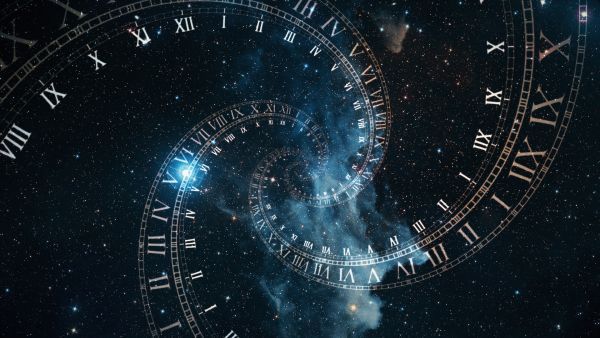- Abuse & The Abuser
- Achievement
- Activity, Fitness & Sport
- Aging & Maturity
- Altruism & Kindness
- Atrocities, Racism & Inequality
- Challenges & Pitfalls
- Choices & Decisions
- Communication Skills
- Crime & Punishment
- Dangerous Situations
- Dealing with Addictions
- Debatable Issues & Moral Questions
- Determination & Achievement
- Diet & Nutrition
- Employment & Career
- Ethical dilemmas
- Experience & Adventure
- Faith, Something to Believe in
- Fears & Phobias
- Friends & Acquaintances
- Habits. Good & Bad
- Honour & Respect
- Human Nature
- Image & Uniqueness
- Immediate Family Relations
- Influence & Negotiation
- Interdependence & Independence
- Life's Big Questions
- Love, Dating & Marriage
- Manners & Etiquette
- Money & Finances
- Moods & Emotions
- Other Beneficial Approaches
- Other Relationships
- Overall health
- Passions & Strengths
- Peace & Forgiveness
- Personal Change
- Personal Development
- Politics & Governance
- Positive & Negative Attitudes
- Rights & Freedom
- Self Harm & Self Sabotage
- Sexual Preferences
- Sexual Relations
- Sins
- Thanks & Gratitude
- The Legacy We Leave
- The Search for Happiness
- Time. Past, present & Future
- Today's World, Projecting Tomorrow
- Truth & Character
- Unattractive Qualities
- Wisdom & Knowledge
Mastery Mondays
The Speed Of Time
Sometimes I can hardly believe the speed at which time passes. One minute you are looking forward to something, and the next minute it’s over and done with and in the past.
Sometimes it feels like life is on fast forward, especially when you have young children. The days seem to drag on at times, but the years just fly by.
My children are 6 and 4 now, and I can hardly believe it. It seems like just yesterday they were born and I was holding them in my arms as tiny infants. Yet, here we are, 6 years later. I look back at photos and videos from when they were babies and toddlers and it hardly feels like that was even real.
As I get older, time seems to speed up even more. I remember my grandma saying that the older she got, the faster time went. At the time I didn’t really understand what she meant, but now I do. It’s like each year is shorter than the last.
Perhaps it’s because as we age, there are fewer "firsts" and more routines. When you are young, everything is new and exciting, and perhaps that makes time feel more expansive. As an adult, many days blend into one another with similar tasks and experiences.
This phenomenon of time speeding up as we age makes me want to be even more intentional about how I spend my time. It makes me want to slow down and savor the moments, especially with my children, because I know these years are fleeting.
It’s a beautiful and bittersweet realization, this acceleration of time. It reminds us to be present, to appreciate each day, and to make the most of the precious moments we have.
Interesting Fact #1
Much of the way we perceive the time is influenced by the language we use. For example, English speakers describe time as being in front or behind them, or as a horizontal line moving left to right. Mandarin speakers envision time as a vertical line where down represents the future, while Greek people tend to view time as a three dimensional entity that is "big" or "much" rather than "long". In Pormpuraww, a remote Indigenous Australian community, time is arranged according to east and west.
Interesting Fact #2
The "arrow of time", which points from the past towards the future, is thought to have its origins in the Big Bang. The infant Universe is thought to have had very low entropy – a measure of disorder or randomness. Since then, entropy has been increasing – this change is what gives the arrow of time its directionality. It's the same reason it's easy to crack a fresh egg, but extremely hard to take a mess of shards and yolk and create a whole fresh egg.
Interesting Fact #3
Metrologists work very hard to keep time, using ever-finer technology to measure the passing of minutes, seconds and hours. However, while their atomic clocks are incredibly accurate, they're not perfect. In fact, there is no clock on Earth that is entirely "correct".
Quote of the day
“Time you enjoy wasting is not wasted time.” ― Marthe Troly-Curtin
Article of the day - 17 Facts That Will Warp Your Sense of Time
From prehistoric animals that lived much closer to us temporally than you might realize to the guillotine lasting way beyond the French Revolution, these facts—adapted from an episode of The List Show on YouTube—are sure to mess with your perception of time.
1. The fax machine is as old as A Christmas Carol …
Most people might say that the fax machine is a product of the 1980s. But Scottish inventor Alexander Bain actually patented the first “electric printing telegraph” in 1843. Meanwhile, not too far away, Charles Dickens was busy publishing A Christmas Carol. Who knew Ebenezer Scrooge would prove to have more staying power than the fax?
2. … And Italy is younger than both of them.
At least as a modern state: Italian unification dates back to 1861.
3. The artists Salvador Dalí and Willem de Kooning died relatively recently.
It would be hard to teach an art history class without mentioning Salvador Dalí’s The Persistence of Memory. The same could be said for Willem de Kooning’s Woman series. At this point, the pioneering painters seem more like historical figures than contemporary celebrities. So it might surprise you to learn that Dalí only died in 1989—the same year Weekend at Bernie’s premiered—and that de Kooning lived until 1997. You’re probably dying to know if the abstract expressionist thought Jack could have fit on the door in Titanic. But unless James Cameron sent him an early cut, the painter never saw the film. He passed away in March, and Titanic didn’t hit theaters until the end of the year.
4. Nintendo is as old as the Eiffel Tower.
If you thought Nintendo sprung up in the ’80s to take the video game industry by storm, think again. Well, it did spring up in the ’80s—just not the 1980s. Fusajirō Yamauchi founded the company in Kyoto way back in 1889; he sold Japanese playing cards called hanafuda. So Nintendo is technically as old as the Eiffel Tower, which opened at the World’s Fair that same year.
5. The Ottoman Empire was still around when Walt Disney released his first cartoons.
So we’ve covered a couple things that started earlier than you might have thought. Now let’s do two that lasted a lot longer than you may realize. Exhibit A: The Ottoman Empire.
Though Osman I established the empire circa 1299, its real heyday didn’t happen until Suleiman the Magnificent held the reins in the mid-16th century. The Ottoman Empire is also often associated with 1453: The year Ottoman forces captured the city of Constantinople, effectively terminating the Byzantine Empire.
But the Ottoman Empire didn’t dissolve in the 1600s, 1700s, or even 1800s. It was still around when Walt Disney released his first animated cartoons in 1920.
The Ottoman army fought with the Central Powers during World War I, suffered catastrophic losses, and surrendered most of its land holdings to Allied Powers in the aftermath. The precise end date of the empire is typically cited as 1922, when Turkish leaders did away with the title of sultan for good.
6. The guillotine was still France’s official execution method when Star Wars debuted.
France’s last state-sanctioned guillotine execution wasn’t during the late 18th-century’s Reign of Terror. It was in 1977—the same year sci-fi fans were turning out in droves to see a little film called Star Wars. In fact, the cranium-removing contraption remained the country’s official method of execution from the French Revolution until the death penalty was abolished altogether there in 1981.
7. Some Greenland sharks alive today may have been around before Henry VIII was crowned king of England.
In a 2016 study, scientists radiocarbon-dated tissue from the eyes of Greenland sharks to determine their ages. The oldest one—a nearly 16-and-a-half-foot-long female—was estimated to be 392, give or take 120 years.
Let’s assume the shark fell on the conservative side of the spectrum: a sprightly 272 years young. That meant she would’ve been born around 1744—making her older than some of the Founding Fathers. The opposite end of the spectrum would put her at 512 years old, with a birthday in 1504. That’s a good five years before Henry VIII was crowned king of England. There are very possibly sharks still swimming in the ocean right now that predate the United States—every modern-day country in the Americas, in fact.
8. Bowhead whales boast lengthy lifespans, too.
Bowhead whales can’t quite compete with that. But dating of their eye tissue revealed that one had died at age 211. So bowheads who managed to live through the mid-19th-century “Golden Age” of American whaling could still be swimming in oceans today.
9. Some wooly mammoths were alive during the construction of the pyramids of Giza.
If most of your knowledge about wooly mammoths comes from the Ice Age movies, you might assume they existed in a world where humans hadn’t yet found their footing. Surely elephants’ long-tusked kin were long gone by the time civilizations were big and organized enough to build, for example, the Pyramids.
Prepare to adjust your mental picture. Egypt’s three main pyramids of Giza were constructed somewhere between around 2550 and 2490 BCE. Granted, most wooly mammoths had already died out around 10,000 years ago. But bones found on Siberia’s Wrangel Island were estimated to be only about 3700 years old. So some wooly mammoths were still kicking in the 1600s BCE—nine centuries after the Egyptians broke ground on the Pyramids.
10. Cleopatra came closer to owning an iPhone than seeing the Giza pyramids under construction.
And if there were some sort of groundbreaking ceremony for that construction project in 2550 BCE, Cleopatra definitely didn’t attend it. Egypt’s most iconic queen wouldn’t be born for another 2480 years—in 69 or 70 BCE. In other words, she’s about 400 years closer to our era than she was to watching the Pyramids go up.
Here are a couple different ways to put that in perspective. One, the Pyramids felt roughly as old to Cleopatra as Socrates does to us. Two, she technically came closer to owning an iPhone than she did to seeing unfinished Giza pyramids.
11. You can fit all of human history (and then some) between the periods when the Stegosaurus and T. Rex existed.
Our tendency to lump large chunks of history together is never more apparent than it is with dinosaurs. It’s easy to assume that all our favorite prehistoric species of land, air, and sea co-existed until that infamous meteor wiped them out in one fell swoop. That’s not how it went down.
The Stegosaurus, for example, lived during the Late Jurassic Period, roughly between 159 and 144 million years ago. The T. rex didn’t appear until the last leg of the Late Cretaceous period, some 68 million years ago.
In the span between the two dinos, you could fit the entire course of human history, including the millions of years occupied by our early ancestors … approximately 12 times over. So an illustration of a T. rex chasing down a stegosaurus should strike you as very anachronistic—technically more than one in which a T. rex clutches a Tamagotchi in its tiny talons.
12. On Cosmic Calendar, which starts with the Big Bang, Homo sapiens don’t show up until December 31.
In his 1977 book The Dragons of Eden, Carl Sagan came up with a way for us mere mortals to conceptualize our place in such a long timeline: the “Cosmic Calendar,” which condenses the whole history of the universe into one calendar year.
If the Big Bang happened first thing on January 1—in reality, roughly 13.8 billion years ago—humans didn’t appear until December 31. And not even in the morning.
According to astrophysicist Ethan Siegel, the first life on Earth came into existence, on the Cosmic Calendar, in late September. The first sexually-reproducing organism—just a single-celled eukaryote—materialized on December 2. The last non-avian dinosaurs didn’t die out until December 17. Homo sapiens finally showed up at around 11:48 p.m. on December 31. We didn’t invent the wheel or writing until some 12 seconds before the New Year.
13. A Civil War veteran’s widow died in 2020.
On the Cosmic Calendar, something like the American Civil War doesn’t exactly qualify as having happened “a long time ago.” And Helen Viola Jackson may have felt its recency more than most. Jackson, the last known living widow of a Civil War veteran, died in 2020.
To be fair, she was 101 years old—and she’d married her late husband when he was already in his nineties. When Jackson was a teenager in 1930s Missouri, her father asked her to do some housework for James Bolin on her way home from school every day. Bolin was an elderly widower who served on the Union side as a private in the Missouri Cavalry’s 14th Regiment.
Though he accepted the help, he didn’t like being a charity case. So he eventually presented Jackson with what was basically a business proposition: Marry me, and you’ll get my military pension when I die. Jackson later told historian Hamilton C. Clark that “It was during the depression and times were hard. He said that it might be my only way of leaving the farm.”
The two tied the knot on September 4, 1936, when Bolin was 93 and Jackson was 17. She kept her last name, kept living at home, and kept her husband a secret. This was mainly due to the scandalous nature of their age difference. As she explained in 2018, “I had great respect for Mr. Bolin and I did not want him to be hurt by the scorn of wagging tongues.”
The potential for tongue-wagging also prevented Jackson from claiming her husband’s pension after he died in 1939. According to her, one of Bolin’s daughters had threatened to drag her name through the mud—and she didn’t want to be known as some sort of gold-digger.
14. Betty White was born before sliced bread was sold in stores.
You’ve heard the joke about how sliced bread was the best thing since Betty White. The facts hold up: Sliced bread first hit shelves in 1928, and the Golden Girl was born in 1922.
15. Canned beer is younger than some serving U.S. Senators.
The parents of the newborn Dianne Feinstein, future Democratic Senator from California, wouldn’t have been able to buy a can of beer to celebrate. In part that’s because the country was still under Prohibition. She was born in June 1933 and the 21st Amendment ending Prohibition wasn’t ratified until December. But also—though there had been earlier experiments—what’s considered the first commercially available canned beer went on sale to the public in January 1935, just in time for the future Senator’s terrible twos.
16. We’ve known Pluto the cartoon character for about as long as we’ve known about Pluto the dwarf planet.
The planet was discovered in February 1930. The dog debuted in Disney’s animated short The Chain Gang just months later. He wasn’t named in the film, and when he reappeared in another short, The Picnic, that same year, he was actually called Rover.
Rover was rechristened Pluto in 1931’s The Moosehunt. While it’s long been speculated that the planet inspired the moniker, nobody can say for sure that that was the case. As Disney director Ben Sharpsteen explained in Walter Brasch’s book Cartoon Monickers: An Insight Into the Animation Industry, “We thought [Rover] was too common, so we had to look for something else. … We changed it to Pluto the Pup, but I don’t honestly remember why.”
17. Your childhood was probably a long time ago.
This next and last revelation might not make you feel so young, even if it’s not exactly new information: 1982 was 41 years ago.
Let’s say, for the purpose of this thought experiment, that you were born in 1972. In 2022 and you’re talking to a 10-year-old about your formative memories from 1982: Seeing E.T. in theaters, hearing “Eye of the Tiger” whenever you turned on the radio, et cetera. That’s roughly the equivalent of a 50-year-old in 1982 telling you, at age 10, all about the year 1942: Casablanca, Glenn Miller, World War II. Feel old yet?
Question of the day - Does time seem to speed up or slow down for you as you age?
Time. Past, present & Future
Does time seem to speed up or slow down for you as you age?













